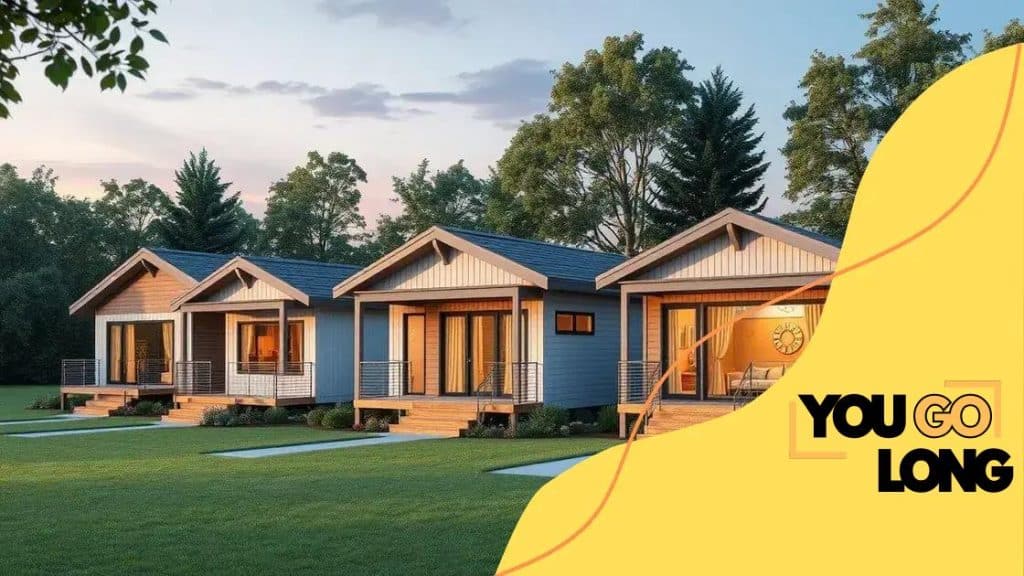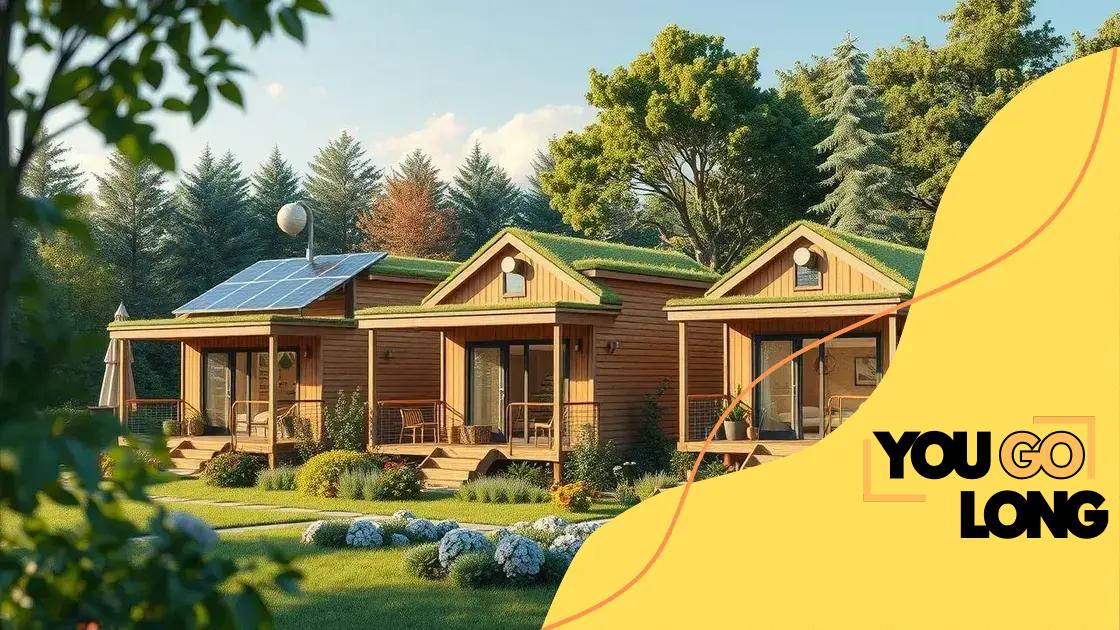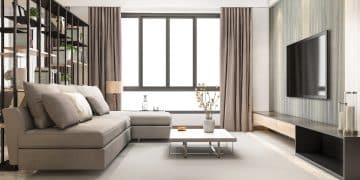The rise of modular homes and their benefits

Advertisement
The rise of modular homes offers a fast, cost-effective, and eco-friendly approach to housing, making them a key solution for urban planning and addressing housing shortages.
The rise of modular homes is changing how we perceive housing today. Have you ever wondered how these innovative structures can offer affordable and efficient living solutions? Let’s dive into their benefits.
What are modular homes?
Modular homes are a modern approach to housing that combines efficiency and design. These homes are built in sections, or “modules,” in a factory setting. After completion, they are transported to the building site and assembled. This streamlined process makes for quicker construction times and often results in lower costs.
Many people are curious about what makes modular homes different from traditional housing. Unlike conventional homes, which are built entirely on-site, modular homes benefit from being constructed in a controlled environment. This minimizes weather-related delays and allows for higher quality control.
Advertisement
Key Features of Modular Homes
There’s a range of features that set modular homes apart:
- Efficient construction that speeds up the building process.
- Flexibility in design, allowing for customization according to the homeowner’s preference.
- Energy-efficient materials that often reduce utility costs.
- Stronger construction due to factory conditions, making them more durable.
Aspects like energy efficiency and customization make modular homes an attractive option for many. Builders can incorporate sustainable materials and innovative designs that align with current environmental standards. The variety in architectural style allows homeowners to choose options that best fit their needs and preferences.
In addition, modular homes can be exactly what many urban planners look for in addressing housing shortages. With the growing demand for affordable living spaces, this home-building method presents a viable solution. They can be adapted to urban areas while maintaining the charm and character of neighborhood designs.
Advertisement
Key benefits of modular housing
One of the most exciting aspects of modular housing is the numerous benefits it offers. These homes are designed not only for efficiency but also for sustainability, making them a desirable option for many. With their unique construction method, modular homes provide a range of advantages that appeal to a variety of homeowners.
For starters, the speed of construction is a major benefit. Since these homes are built in a factory, the weather doesn’t delay their progress. This means that families can move into their new homes much faster than with traditional building methods. The reduction in time directly translates into savings in labor costs.
Affordable Options
Moreover, modular homes tend to be more affordable. They require less manpower on-site and the streamlined process reduces the overall costs. Many potential homeowners are drawn to this option due to:
- Lower construction costs.
- Reduced maintenance expenses due to high-quality manufacturing.
- Customization options that fit any budget.
- Less waste generated during building.
Another significant benefit of modular housing is its flexibility in design. Customers can choose from a variety of floor plans and styles, enabling them to create homes that suit their lifestyle perfectly. The modular approach allows for expansion and modifications in the future without the need for extensive renovations.
Additionally, energy efficiency is a vital aspect of modular homes. Often, these homes use sustainable materials and technologies which reduce energy consumption. This means lower utility bills for homeowners and a smaller carbon footprint. Eco-conscious buyers often seek out modular housing for these reasons.
The sustainability aspect of modular homes

The sustainability aspect of modular homes is one of the most compelling reasons to consider this housing option. These homes are designed with eco-friendliness in mind, making them attractive for those looking to reduce their environmental impact. By using sustainable materials and energy-efficient practices, modular homes set a standard for modern construction.
A key factor in the sustainability of modular housing is the reduction of waste during the building process. Since components are manufactured in a factory, there is less material wasted compared to traditional building methods. This efficiency not only saves resources but also minimizes the impact of construction on the surrounding environment.
Eco-Friendly Materials
Many modular homes incorporate eco-friendly materials that contribute to their sustainability. These include:
- Recycled materials that reduce the need for new resources.
- Energy-efficient insulation which helps maintain temperature and reduce energy bills.
- Low-VOC (volatile organic compound) paints and finishes that improve indoor air quality.
- Smart home technologies that enhance energy efficiency.
Moreover, the design of modular homes often emphasizes natural light and ventilation. This not only creates a pleasant living environment but also decreases the reliance on artificial lighting and mechanical cooling or heating, further lowering energy use.
Many people are surprised to learn that modular housing can also include renewable energy options. Homeowners can install solar panels or wind turbines, increasing their energy independence. These features allow residents to further reduce their carbon footprint while enjoying the benefits of modern living.
How modular homes compare to traditional builds
When considering new homes, many people wonder how modular homes compare to traditional builds. Each option has its own set of advantages and drawbacks, making it essential for potential homeowners to understand these differences. Modular homes are constructed in sections at a factory and then assembled on-site, while traditional homes are built entirely on location.
One major difference is the speed of construction. Modular homes can be completed in a fraction of the time compared to traditional homes. Typically, it takes weeks rather than months to finish, thanks to streamlined factory production. This efficiency not only allows for quicker occupancy but also reduces overall labor costs.
Cost Efficiency
Cost is another significant factor. Often, modular housing is more affordable than traditional homes:
- Reduced labor costs due to shorter construction times.
- Less waste generated during the building process.
- Potentially lower financing costs because of faster builds and reduced interest accrual.
This affordability makes modular homes an attractive option for first-time buyers and those on a budget. While traditional homes may allow for more customization during the building phase, modular homes offer various designs and layouts that can still meet diverse needs.
Both types of homes can be built to high quality standards. However, factory production in modular homes often means better quality control. Since they are built indoors, they are less susceptible to weather-related delays and damage, resulting in homes built under consistent conditions.
Additionally, traditional homes may have more extensive local regulations and permits, which can extend construction timelines. Modular homes, on the other hand, sometimes encounter fewer zoning issues due to their efficient design and modern construction methods.
The future of modular housing in urban planning
The future of modular housing in urban planning looks promising. As cities grow, the demand for affordable and efficient housing increases. Modular homes present an innovative solution to address these challenges. Their ability to be built quickly and efficiently makes them ideal for urban settings where space is limited.
Urban planners are beginning to recognize the value of integrating modular homes into city development. One significant advantage is the speed at which these homes can be constructed. This rapid development helps meet the urgent need for housing in fast-growing populations and in areas affected by housing shortages.
Space Optimization
Another vital aspect of modular housing is its versatility in adapting to limited space. In dense urban environments, these homes can be designed to fit into small lots or even stacked to create multi-family units. Some benefits of modular housing in urban planning include:
- Efficient use of land, allowing for more housing units in smaller areas.
- Flexibility in design, ensuring that homes can fit into diverse neighborhoods.
- Reduced construction waste that contributes to a greener urban environment.
As cities evolve, integrating modular housing can support sustainable development. These homes can be designed with green technologies that reduce energy consumption, making urban living more environmentally friendly. The use of renewable materials in construction also promotes sustainability.
Moreover, local governments are exploring zoning changes to accommodate modular homes. This shift can lead to more accessible housing options for different income levels. By embracing the modular concept, urban planners can help foster inclusive communities where diverse populations can thrive.
FAQ – Frequently Asked Questions about Modular Homes
What are modular homes?
Modular homes are built in sections in a factory and then assembled on-site, allowing for faster construction and often lower costs.
What are the benefits of modular housing?
Modular housing offers cost efficiency, faster build times, eco-friendly construction methods, and flexible design options.
How do modular homes compare to traditional homes?
Modular homes typically take less time to build and can be more affordable while maintaining high quality standards.
Why are modular homes important for urban planning?
They provide quick and efficient housing solutions in urban areas, helping address space limitations and housing shortages.





